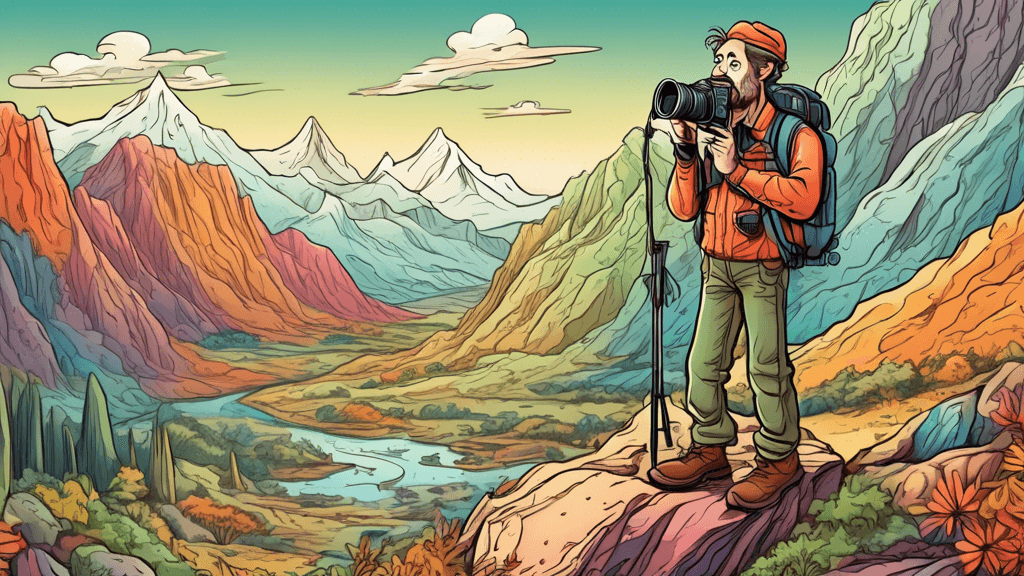
Top Mistakes to Avoid for Stunning Landscape Photography
Share
Introduction to Landscape Photography
Landscape photography captures not just the essence of our environment but also the spirit of the natural world. It's an avenue for photographers to convey not only beauty but profound environmental narratives. However, as with any art form, achieving mastery in landscape photography involves understanding and avoiding common pitfalls. What are these typical mistakes, and how can they affect the impact of your photographic work?
1. Ignoring the Golden Hours
Lighting is pivotal in all forms of photography, but it's particularly crucial in landscape photography. The 'golden hours' at sunrise and sunset provide soft, diffused light that enhances textures and adds a magical glow to your scenes. Failure to capitalize on these times can result in flat and unremarkable images lacking depth and emotion. As photographer Ansel Adams once said, Light is everything in landscapes. This simple truth underscores why shooting at the right time is imperative.
2. Neglecting Composition Rules
It might seem tempting to simply capture a scene as you see it, but composition is key to turning a good photograph into a great one. One common mistake is not using the 'Rule of Thirds' effectively or ignoring leading lines that guide the viewer’s eye through the image. Striking a balance between the sky, land, and interest points can transform a straightforward shot into a profound visual story. Remember, a well-composed photograph not only captures attention but also holds it.
3. Overlooking the Importance of the Foreground
A captivating foreground can significantly enhance the depth and interest of a landscape shot. Novice photographers often focus solely on capturing distant vistas and miss out on the powerful impact that elements in the foreground can have on the overall composition. Whether it’s a cluster of wildflowers, a patterned rock formation, or a winding path, incorporating these elements can provide a pathway into the scene, making your images more engaging and layered.
Examples of Effective Foreground Use:
- A rocky beach leading the eye to a sunset over the ocean
- Colorful autumn leaves framing a distant mountain
- A fallen log directing attention to a serene lake
4. Not Paying Attention to the Weather
Weather plays a dramatic role in setting the tone of your landscape photos. Many beginners make the mistake of desiring only clear, sunny days for their shoots. However, stormy skies, fog, and even rain can create moody atmospheres that result in more powerful images. Weather conditions can transform the same location into a variety of thematic scenes, thus offering diverse photographic opportunities from the exact same vantage point.
Why Weather Matters:
Bad weather makes for good photography. This quote encapsulates why diverse climatic conditions can be beneficial. They bring out different emotions and stories from the environment, offering a fresh palette for the photographer.
5. Not Using a Tripod
A sturdy tripod is a landscape photographer's best friend. Avoiding camera shake is crucial when capturing landscapes, especially in low light conditions during sunrise or sunset. A tripod also slows you down, forcing you to deliberate about the composition, focus, and exposure settings, ultimately leading to more thoughtful and impactful images.
6. Forgetting to Explore Different Perspectives
Many photographers get caught up in taking images from eye level. While this might be the natural way of seeing the world, it does not necessarily translate into the most interesting photographs. Experimenting with different angles and elevations can unveil new perspectives and compositions, making familiar scenes appear new and intriguing.
Conclusion: Embrace Mistakes as Learning Opportunities
Making mistakes is a natural part of the learning process in photography. Each error provides a stepping stone towards improving your craft. By understanding and rectifying common errors like ignoring lighting conditions, composition, and perspectives, you can start to produce consistently stunning landscape photographs that not only depict the beauty of nature but also speak of its vast, untamed spirit.
Remember, every shot you take brings you one step closer to mastering the art of landscape photography. So, grab your camera, respect your environment, and capture the world in its grandeur!
Are you ready to take your landscape photography to the next level and avoid these common mistakes? Embrace the lessons learned and let every shot be a conscious effort to improve. Happy shooting!





